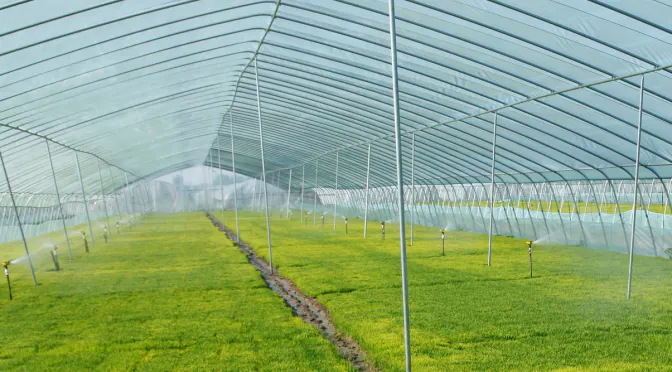Climate change has disrupted the natural rhythm of agricultural cycles, which is why alternate modes of farming have garned the attention of agriculturists, policy makers, and industry experts. Any discussion about Agriculture 2.0 is incomplete without touching upon indoor farming. Often called the “future of agriculture”, indoor farming marks a significant change in farming approaches and food production.
Read: The Future of Farming is ‘Smart’: Deciphering the Layers of Hi-Tech Agriculture
The landscape of indoor farming
From semi-automated greenhouses in rural areas to urban farms, indoor farming involves different systems and structures. While indoor vertical farms and greenhouses are quite popular among agriculturists, when it comes to choosing growing systems, hydroponics are preferred over aeroponics and soil-based cultivation.
The major change in the landscape of indoor farming is primarily due to the decrease in technology costs, along with an increase in the local demand for food. This explains why container farms, glass/poly greenhouse, low-tech plastic hoop house, and indoor DWC have emerged as some of the popular indoor farming systems.
Futuristic farms not only increase the production of fruits and vegetables, but also optimize the use of water and reduce the carbon footprint. With additional technological innovations, it is expected that the landscape of indoor farming will further evolve in the near future.
The cost of operating an indoor farm
Critics have often pointed to the operational costs of indoor farming as a major downside of this agriculture system. Even our industry experts agree that there was a time when indoor farming was a cost-intensive process. But with innovation and the fall in the prices of technologies like LEDs, the cost of operating an indoor farm has decreased substantially.
Though the cost involved is hugely dependent on the ‘kind’ of growing system employed, here is a rough estimate on the operational cost of an indoor farm:
Average cost involved in conventional farming technique – 10.59 pounds per square foot
Average cost involved in greenhouse farming – 1.85 pounds per square foot
Source: USD Data
Read: How Developing Countries Look to Micro Irrigation to Boost Crop Yields
Will all farms in the future be indoors?
Modern commercial farming is unsustainable, and agriculture 2.0 is incomplete without indoor farming, so the obvious question is whether all future farms will be indoors. Conventional farming requires massive deforestation; for instance, according to our industry experts, to feed the planet’s population in 2050, additional arable land the size of Brazil would be required. If this were to happen, our rainforest will be completely lost and the damage to the climate equilibrium would be immense.
Apart from issues related to arable land, weather-related crop failures, heavy use of pesticides, and soil depletion are other areas of concern inherent in commercial farming systems.
Indoor farms not only address the issue of arable land, but as most of them employ precision agriculture technology, the dependency on natural resources like water and soil is also limited. For instance, vertical farming can be achieved on towering skyscrapers. The recent announcement by vertical farming startup Plenty to build 300 organic, indoor farms in or near Chinese cities only substantiates that indoor farming is here to stay.
Even though conventional farms won’t completely disappear in the next few years, there is no doubt that agri-business has already entered a revolutionary phase with indoor farming.
Indoor farming is positive news for a world that is fighting a losing battle with the depletion of natural resources. Along with offering food security, indoor farming will encourage the development of measures for building a greener earth.



